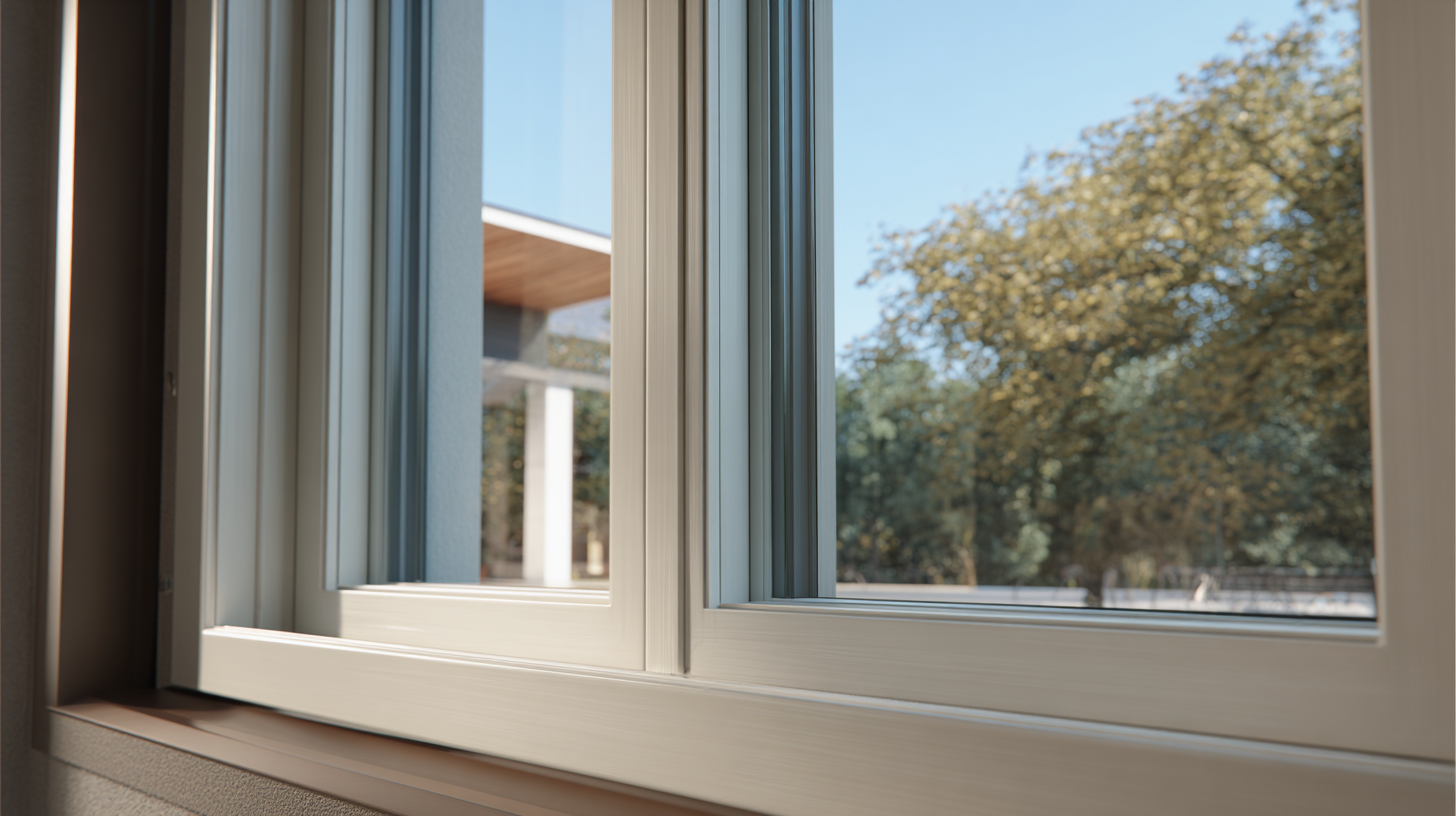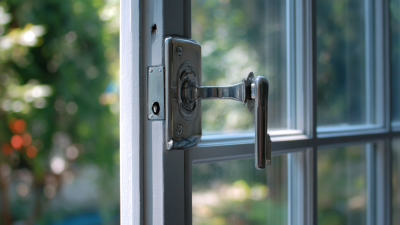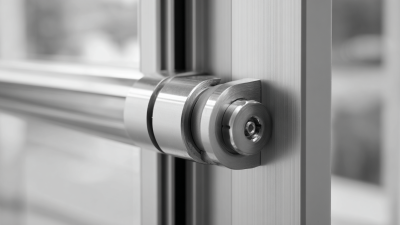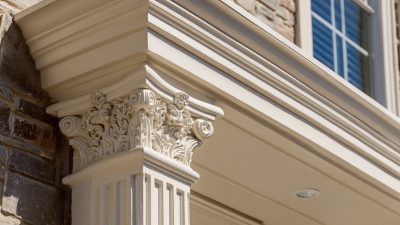NEWS at Quanex
See the latest news, posts and events from Quanex about our business, the industry, our people and more.
2025 Top 10 Innovative Window Components for Home Improvement
In the evolving realm of home improvement, functionality marries aesthetics through innovative designs and technologies. Among these advancements, window components stand at the forefront, enhancing not only the visual appeal of a home but also its energy efficiency and overall value. As we look towards 2025, this article highlights the top 10 innovative window components set to redefine the industry.

From smart glazing systems that automatically adjust to light conditions to multi-functional frames designed for superior insulation, these innovations represent the confluence of craftsmanship and technology. Homeowners seeking to upgrade their living spaces can benefit immensely from understanding these new offerings. By integrating cutting-edge window components, they can create environments that are both stylish and sustainable, paving the way for a brighter future in home design. As we delve deeper into each of these components, we will explore how they can transform traditional concepts of home improvement into extraordinary living experiences.
Smart Window Sensors: Enhancing Energy Efficiency and Security
The rise of smart technologies has transformed the way we approach home improvement, particularly in the realm of window components. Smart window sensors, a cornerstone of this innovation, play a pivotal role in enhancing both energy efficiency and security for homeowners. These sensors can detect changes in temperature and occupancy, allowing windows to open or close automatically based on real-time conditions. This not only optimizes indoor climates but also significantly reduces energy consumption by minimizing unnecessary heating or cooling.
Moreover, smart window sensors contribute to home security by alerting homeowners to unusual activities or intrusions. For instance, if a window is opened unexpectedly while the house is unoccupied, these sensors can send instant notifications to the homeowner's smartphone. This integration of security and energy management creates a dual-layered approach, ensuring that residences are both safeguarded and efficient. As technology continues to evolve, these window components are essential for creating smarter, more sustainable living environments.
2025 Top 10 Innovative Window Components for Home Improvement
| Rank | Component | Energy Efficiency Rating | Security Features | Smart Functionality |
|---|---|---|---|---|
| 1 | Smart Window Sensors | A++ | Break-resistant Glass | Remote Monitoring |
| 2 | Automated Blinds | A+ | Tamper Alerts | Schedule Management |
| 3 | Smart Window Films | B++ | Impact-resistant | Smart Tinting |
| 4 | Sealed Double Glazing | A++ | Reinforced Frames | Integrated Sensors |
| 5 | Weatherproofing Components | A> | Secure Locks | Heat Detection |
| 6 | Energy-efficient Glass | A++ | Camera Integration | Self-dimming |
| 7 | Adjustable Ventilation Systems | B+ | Alarm Systems | Remote Control |
| 8 | UV Filtering Components | A | Smart Locks | Status Monitoring |
| 9 | Acoustic Insulation Frames | A+ | Remote Access | Automated Alerts |
| 10 | Smart Connectivity Modules | A++ | Burglar Alerts | Integration with Home Automation |
Automated Tinting Technologies: Adapting Light and Privacy with Ease
Automated tinting technologies have emerged as a game-changer in the window components market, providing homeowners with unprecedented control over light and privacy in their living spaces. According to a recent report by MarketsandMarkets, the smart glass market is projected to reach $6.5 billion by 2025, growing at a CAGR of 12.9%. This rise is largely attributed to advancements in automated tinting solutions that adapt to the sunlight's intensity, thus enhancing comfort and energy efficiency.
These innovative systems utilize electrochromic and photochromic technologies to change the tint of the glass dynamically. This not only allows for optimal light management but also significantly reduces the reliance on artificial lighting and HVAC systems. A study by the International Energy Agency (IEA) indicates that smart glass can reduce energy consumption for cooling by up to 30%, demonstrating the sustainability advantages it offers. With growing awareness of energy-efficient solutions, automated tinting is set to revolutionize how homeowners approach window design, blending functionality with aesthetic appeal seamlessly.
Integrated Solar Panels: Harnessing Renewable Energy Through Windows
The integration of solar panels into windows represents a groundbreaking shift in the way we harness renewable energy in our homes. As the global transparent solar cells market is projected to reach $89.88 million by 2032, with a robust CAGR of 18.40%, this innovative technology is poised to reshape our approach to energy consumption. Semi-transparent solar cells, which can now achieve record efficiency, pave the way for building-integrated photovoltaics that blend seamlessly into the aesthetic of our living spaces.
Researchers have developed a new parameter, FoMLUE, to effectively evaluate the potential of photoactive materials for these semi-transparent applications. This advancement signifies not only a technical leap but also emphasizes the immense opportunities that semi-transparent solar cells present for urban environments where space for conventional solar panels is limited. By incorporating these solar technologies into windows and façades, homes can contribute to energy generation while significantly reducing CO2 emissions, promoting a sustainable future.
2025 Top 10 Innovative Window Components for Home Improvement
This chart represents the projected adoption rates of integrated solar panels as a window component in home improvement by 2025, highlighting the growing trend in renewable energy solutions in residential buildings.
Soundproofing Innovations: Creating Quieter Home Environments
As homeowners increasingly prioritize comfort and tranquility, soundproofing innovations in window technology have become crucial. According to a recent report by the Window and Door Manufacturers Association (WDMA), effective soundproofing can reduce noise pollution by up to 70%, making homes significantly quieter and more relaxing spaces. These advancements include multi-layered laminated glass, improved window seals, and specialized frames that minimize vibration and sound transmission.
To enhance your home’s soundproofing, consider investing in triple-glazed windows, which outperform traditional double glazing in noise reduction. Additionally, ensuring that window frames are properly sealed can eliminate gaps where sound can enter. One useful tip is to use acoustical caulk around window frames during installation, as it provides an extra layer of protection against noise infiltration.
When selecting soundproofing windows, look for products marked with a Sound Transmission Class (STC) rating. An STC rating of 40 or higher is ideal for a significant reduction in noise. Moreover, incorporating heavy drapes made of thick fabric can further dampen sounds when combined with high-performance windows, providing an aesthetically pleasing yet effective solution to create a quieter home environment.

Advanced Insulation Materials: Maximizing Thermal Performance in Windows
In the quest for energy efficiency and comfort, advanced insulation materials are transforming windows into powerful thermal barriers. Traditional glazing methods have historically struggled to provide adequate insulation, but modern innovations such as vacuum glazing and aerogel-infused spaces are setting new standards. Vacuum glazing utilizes a thin layer of vacuum between two panes of glass to reduce heat transfer, while aerogel, known for its exceptional insulating properties, enhances window performance without adding significant bulk. These materials not only minimize energy loss but also contribute to a more sustainable living environment.

Furthermore, the integration of smart technology into window design enhances their thermal performance. Electrochromic glass, which can change its opacity and tint based on external conditions, allows homeowners to regulate solar heat gain, further supporting energy efficiency. This adaptability ensures that homes remain comfortable across varying climates while reducing dependency on heating and cooling systems. As these advanced insulation materials and technologies continue to evolve, they promise not only to maximize thermal performance in windows but also to redefine modern home improvement practices for a greener future.
Related Posts
-

Innovative Approaches to Choosing New Window Screens for Your Home
-

The Ultimate Guide to Choosing the Best Sliding Door Seal for Your Home
-

Unlocking Comfort: The Essential Guide to Choosing the Right Window Screen Hardware for Energy Efficiency
-

How to Enhance Energy Efficiency with Sliding Door Seals
-

Understanding the Importance of Choosing the Right Exterior Door Casing for Your Home
-

Unlocking Opportunities for Screen Door Frame Innovations at the 2025 China Import and Export Fair
